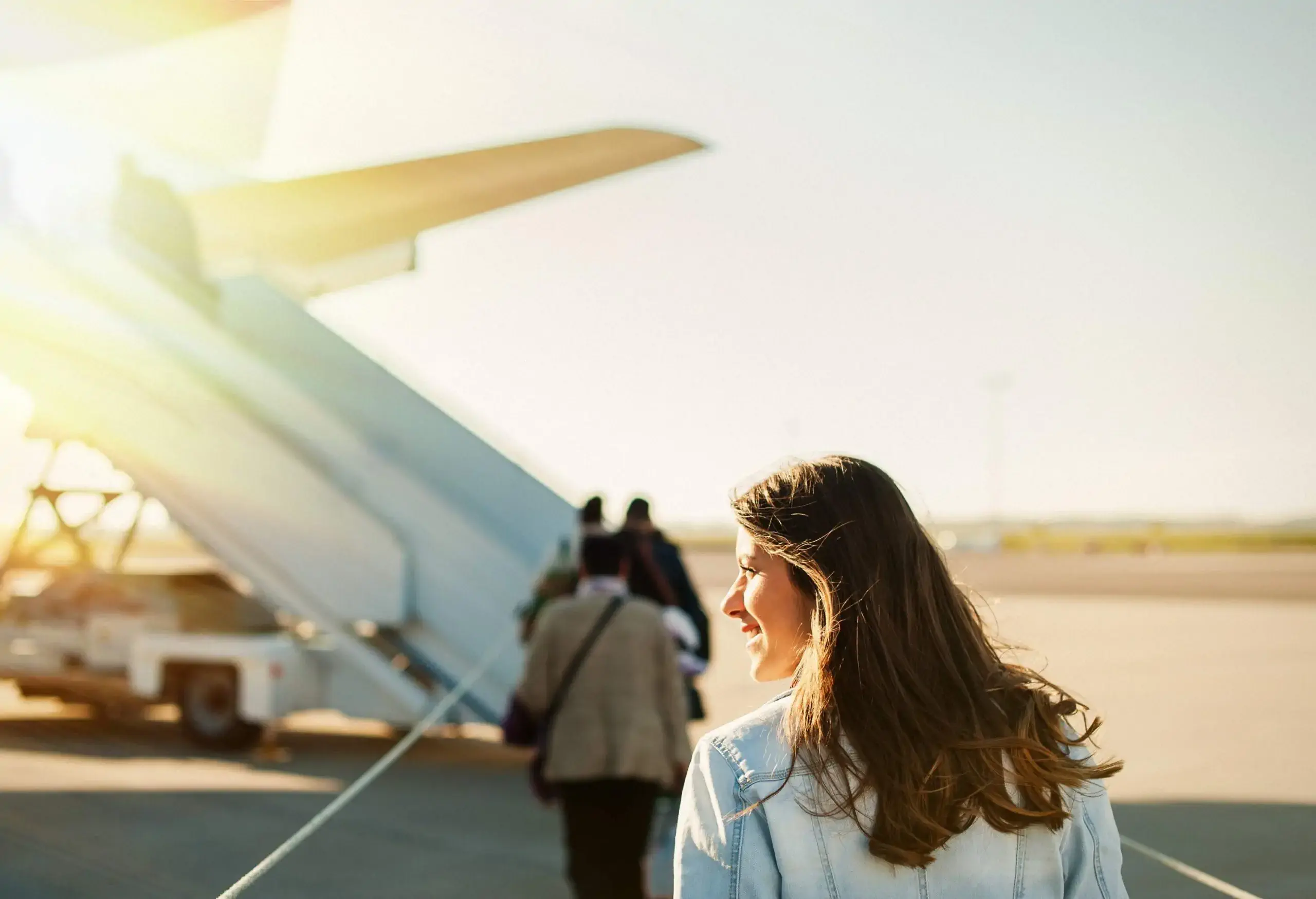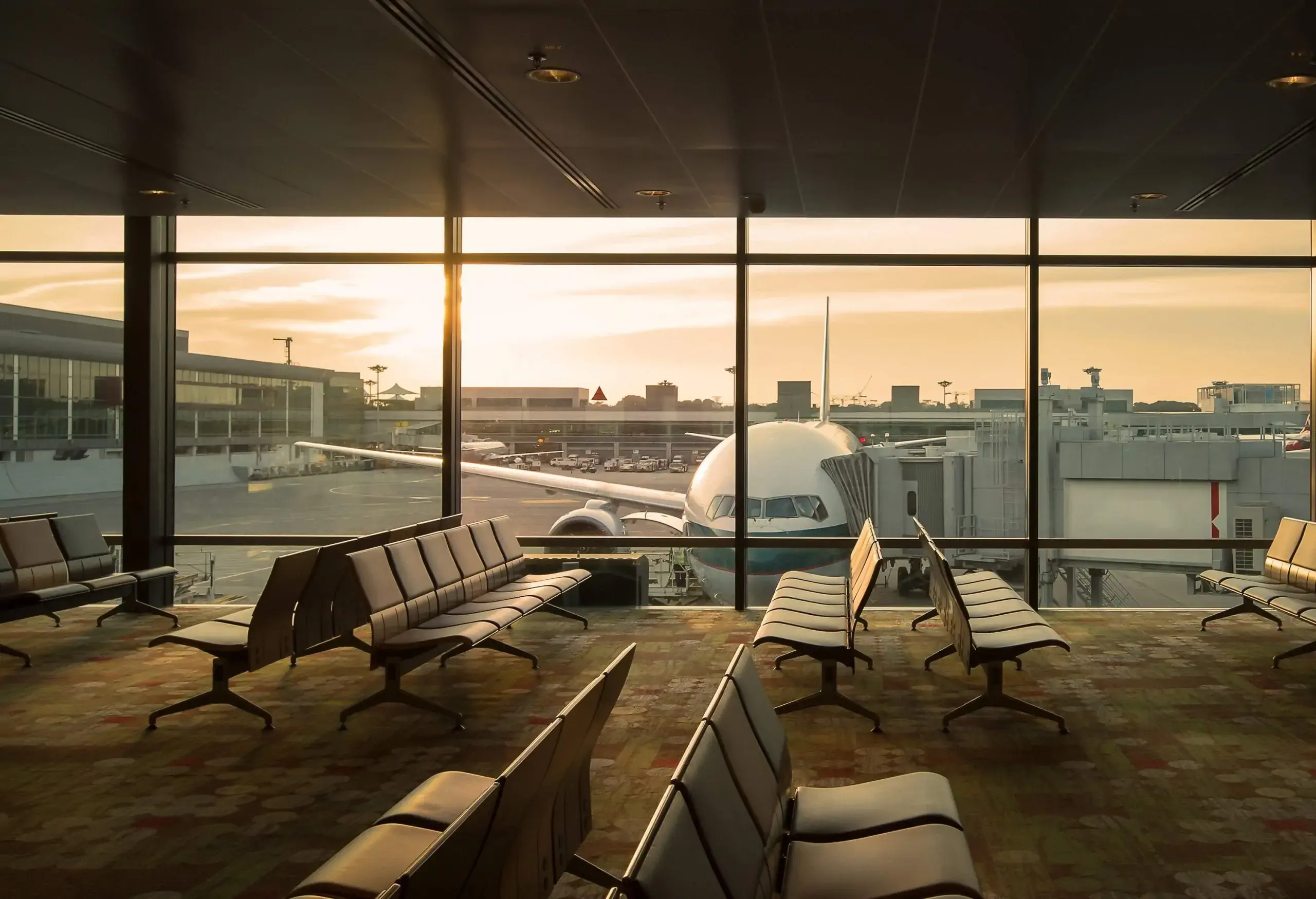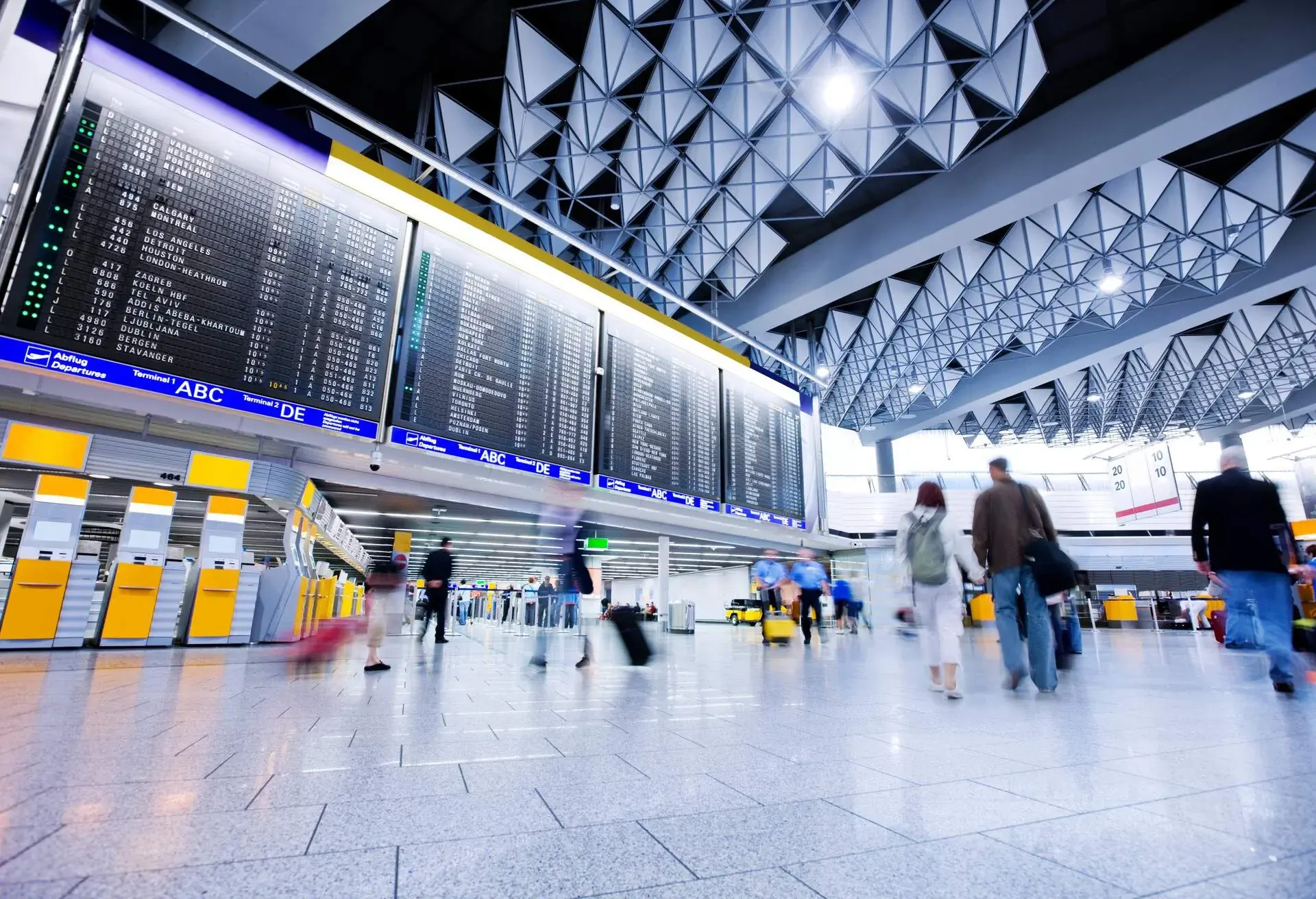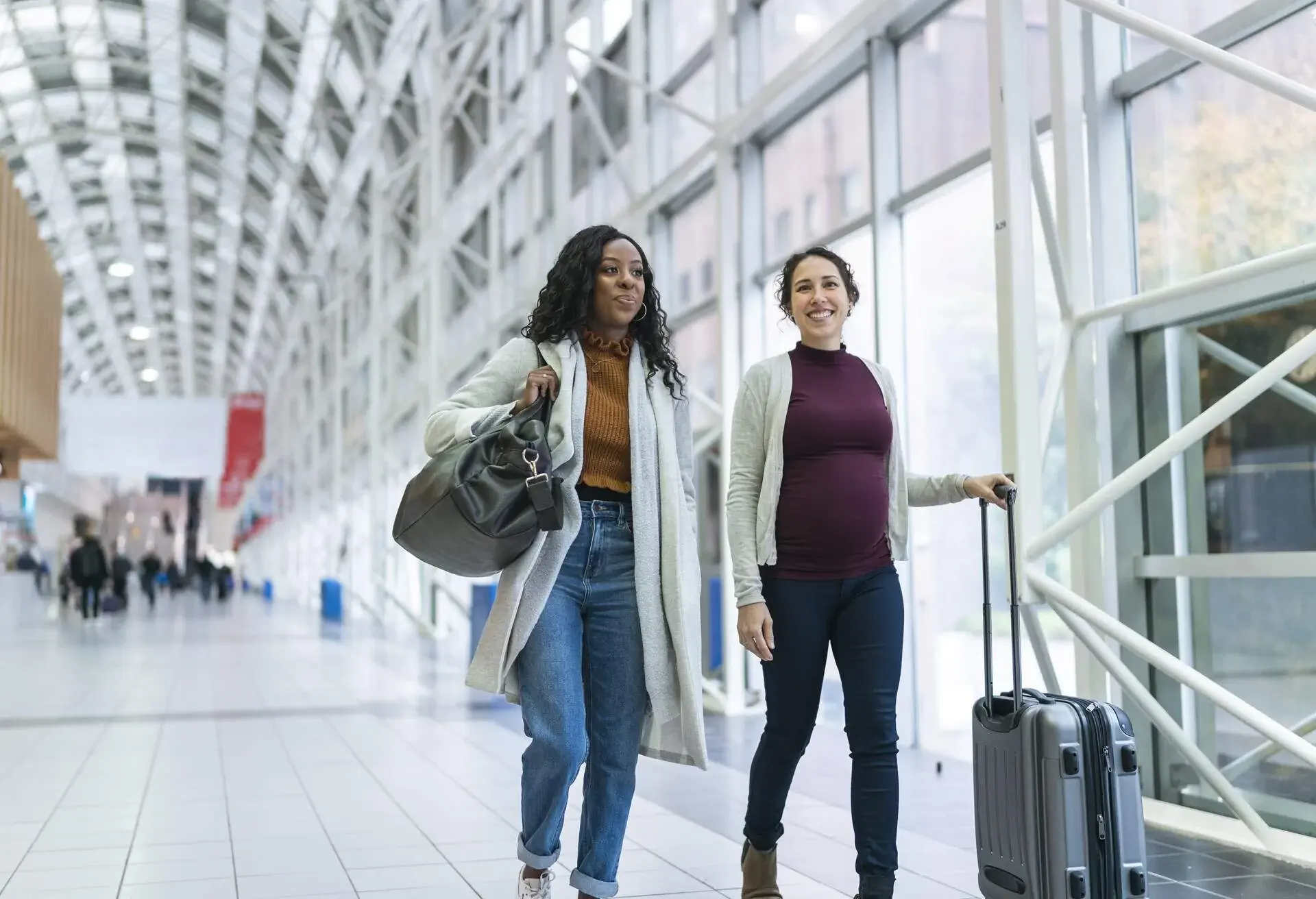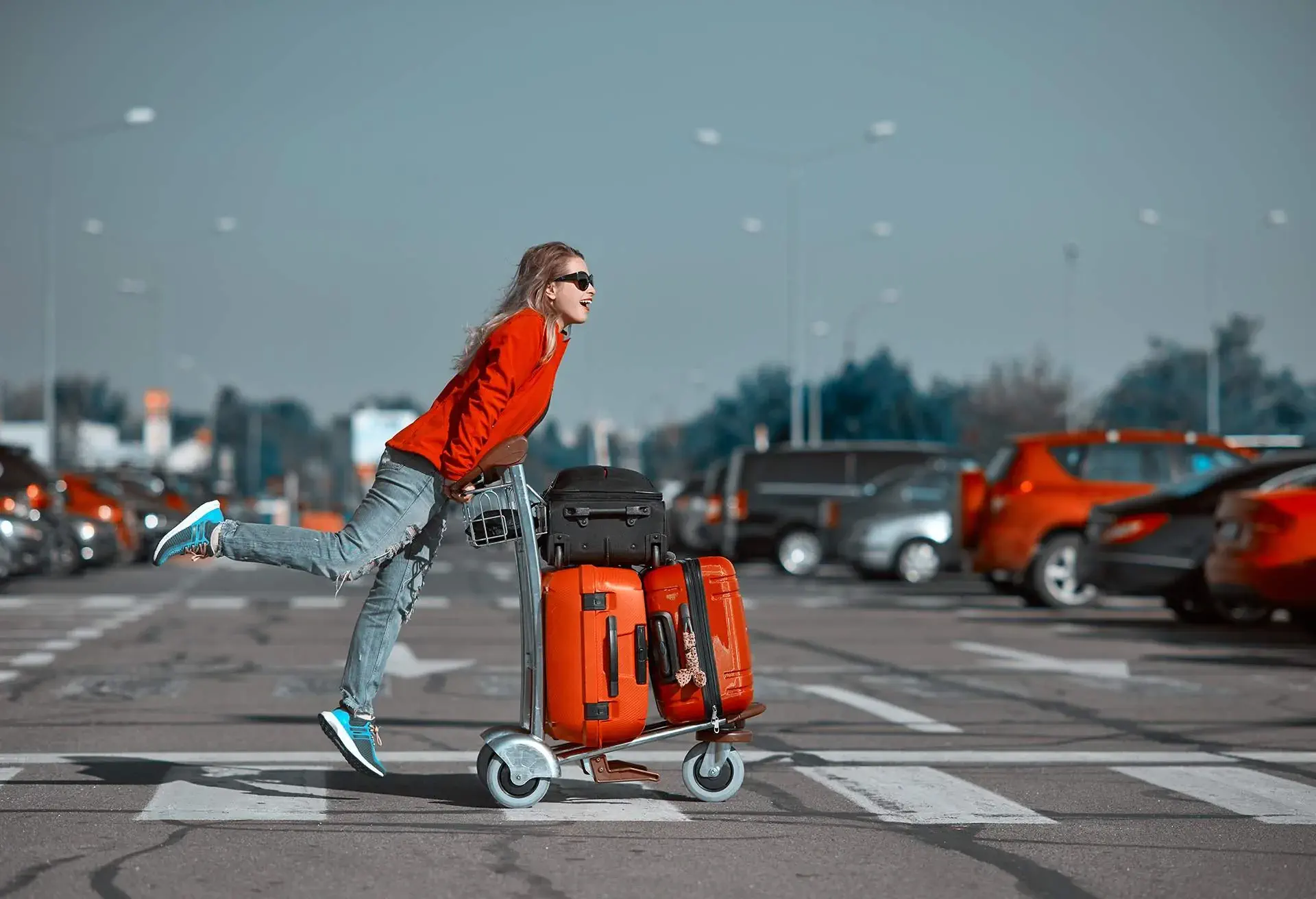Airports can be crowded, confusing and intimidating. But they can also be easy-to-maneuver and entertaining. This airport navigation guide is full of tips and tricks to help you make your way through the airport like a pro.
Arriving at the airport.
You’ve booked a flight, and packed your bags. The KAYAK Flight Tracker confirms your flight is on time. Now it’s time to go to the airport.
Whether you take a bus, taxi, train, shared ride service, or are lucky enough to get a ride from a friend or family member, the key to arriving at the airport is to do so in time to catch your flight with minimum amount of fuss and the least amount of stress.
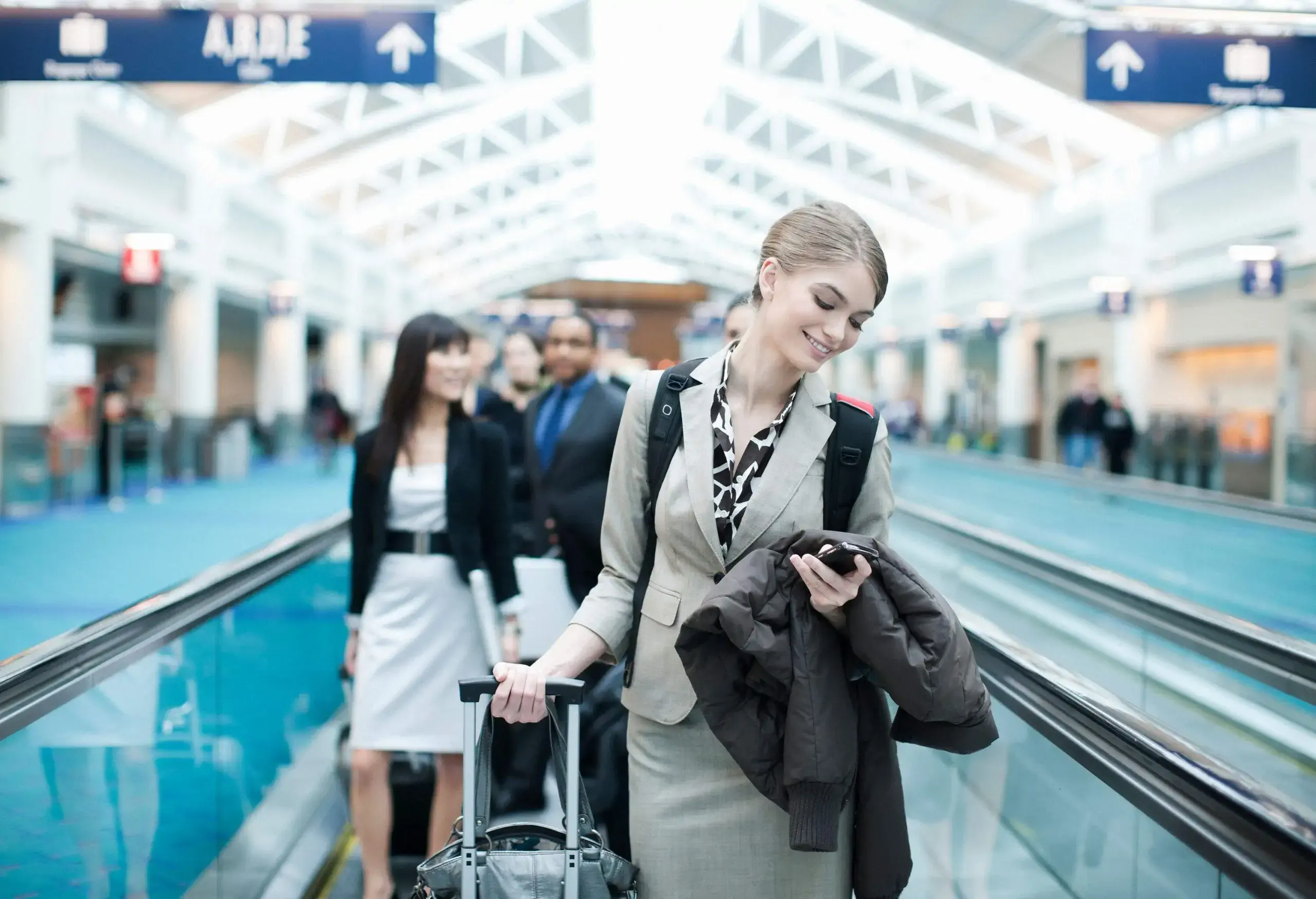
Arrive too late and you might miss your flight. Show up too early and your airline’s check-in desk or baggage drop might not be open yet. So, how early should you arrive at the airport? In general, airports and airlines suggest you arrive at least two hours before a domestic flight and three hours before an international flight.
But consider arriving earlier if you’re checking bags, need to show documents before getting your boarding pass, during holidays, over the summer, or when airports are generally busy, such as Monday mornings and Friday afternoons.
Check-in and luggage drop-off.
If you plan on using a digital boarding pass, print out a copy as well. If you forgot to charge your phone overnight or if security lanes are long your phone may lose its charge and you won’t be able to access your boarding pass. A paper backup is inexpensive peace of mind.
And while airline’s rules for carry-on bags may differ, the Transportation Security Administration’s list of what is prohibited in carry-on bags remains the same.
When in doubt, check the Transportation Security Administration’s detailed "What Can I bring?" tool or chat with TSA on social media for a ruling on an item you want to pack in your carry on. Baseball bats, for example, are a no, but tennis rackets are a yes.
If you are checking bags, confirm that your bags comply with checked bag rules for your airline. And be sure to weigh the bags you plan to check before you leave for the airport.
Plan an early arrival at the airport if you do plan to check bags. While you can save some time if your airline allows you to print bag tags and pay your checked bag fees online, you’ll still need get in a line to hand in your bag, whether at a self-service or staffed bag check station and those lines are often long, especially during the holidays.
Going through the security checkpoint.
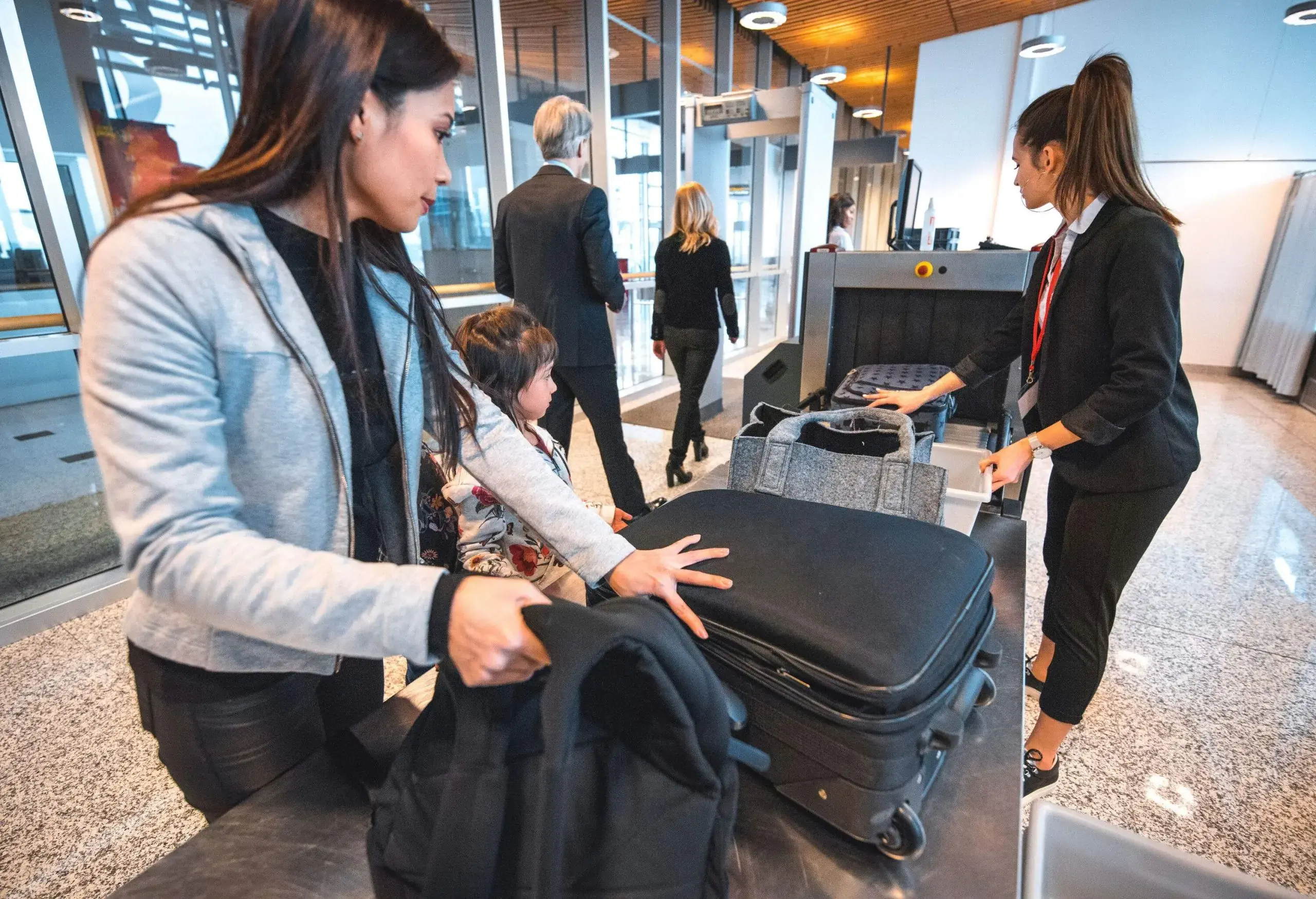
Going through the security checkpoint can be the most stressful and unpredictable part of navigating an airport. But there are steps you can take to make your security checkpoint experience go a bit smoother.
- Pack right. Make sure you don’t have flammables, sharp objects and other prohibited items in your purse, briefcase or carry-on bag.
- If you’ve let your kid pack their own bag, look inside in case they’ve packed a toy gun, a full bottle of their favorite juice or soda, or some other item that is not allowed in carry-on bags.
- Dress for success by wearing shoes, jackets and sweatshirts that can be removed easily at the checkpoint, even if you have TSA Precheck. And always wear socks. Going barefoot through the scanning machines is just icky and unhealthy.
- Don’t put your wallet, passport, expensive watch or jewellery, or even your belt loose in the checkpoint tub. Instead, empty your pockets into a small bag that you place inside your carry-on bag. It’s safer and you’re less likely to leave anything behind.
- Have your boarding pass and ID ready to show to the TSA officer. Passports and state-issued driver’s licenses are among the forms of identification acceptable at airport checkpoints. But as of May 7, 2025, you will need to make sure that your Driver’s License is REAL ID-compliant.
Technology is speeding up the security checkpoint experience, but during busy travel periods standard checkpoint lines at many airports can get very long. Several programs offer expedited journeys through airport security.
Time management at the airport.
Once through airport security, check to see what gate your plane is leaving from and how long it will take to get to your gate. Keep in mind that in large airports, the trek from the main terminal to your gate can be 15 to 30 minutes.
Many travelers go directly to their gate, grab a seat, and wait there watching planes and people come and go. But if you’re through security with plenty of time before your flight, you can also explore the amenities at the airport.
In general, airports have been upping their offerings in terms of shops, restaurants and bars. So, if you look around, you have a good chance of finding locally sourced gifts, dining venues with menus created by noted chefs, and local craft beers and sprits at the bars.
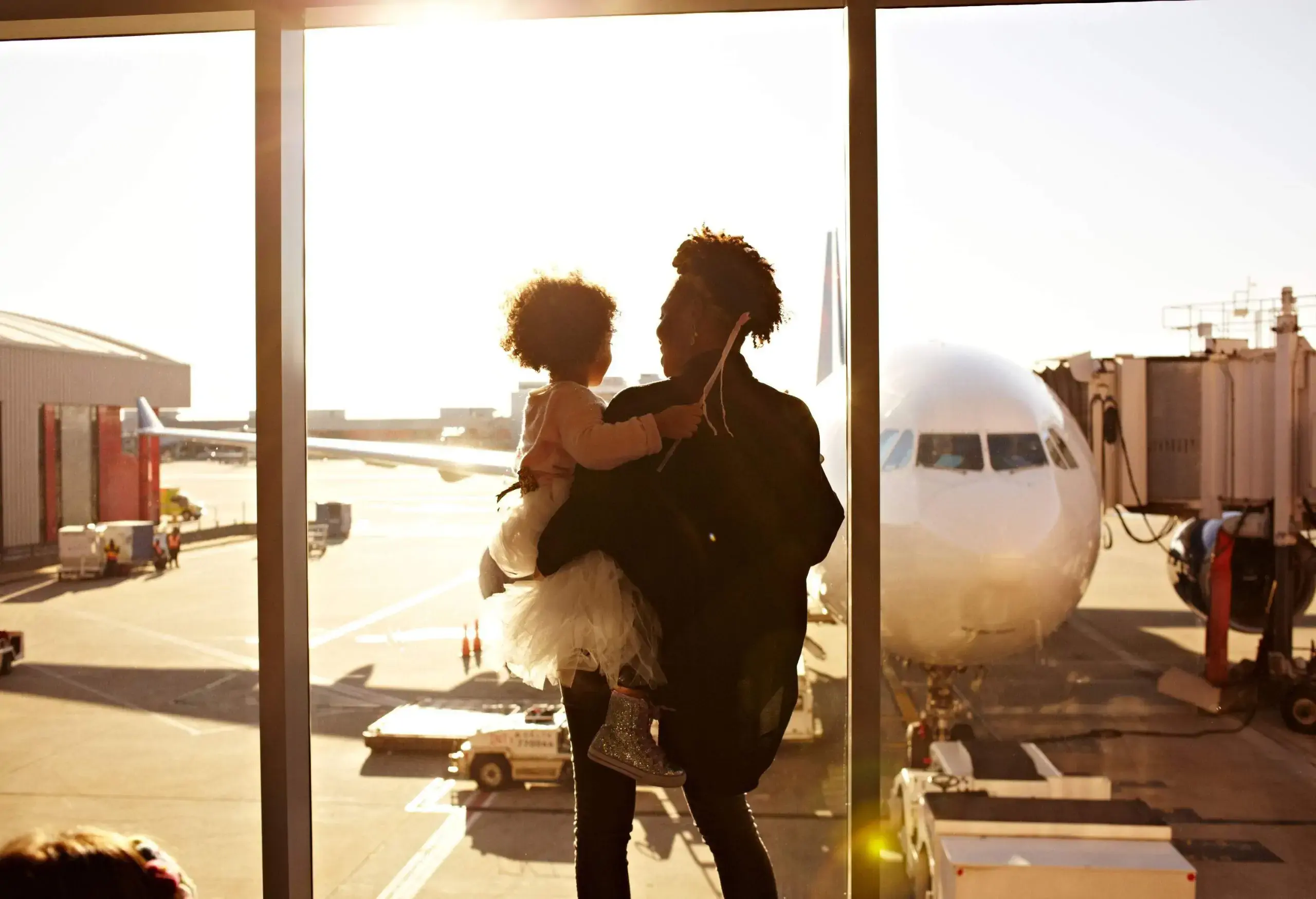
In addition to kids play areas, pet relief areas, nursing rooms for mothers and marked walking paths for those intent on getting their steps in between flights, airports in San Francisco (SFO), Chicago (ORD), Houston (IAH) and several other cities have yoga rooms with loaner mats.
And you’ll find outdoor observation decks or terraces in a handful of airports, including Denver International, San Francisco International, and at New York’s John F. Kennedy International Airport, in JetBlue’s T5.
You’ll find both permanent, often site-specific art works and temporary art exhibits at many airports, much of it is museum quality. Live music and special holiday events are now regular offerings at many airports as well.
If you have certain credit cards, airline status, or a Priority Pass membership, you can spend your airport wait time in a private airline or credit card-affiliated lounge. Some lounges, such as those operated by The Club, are open to any travelers who purchases a daily pass.
Waiting at the gate.
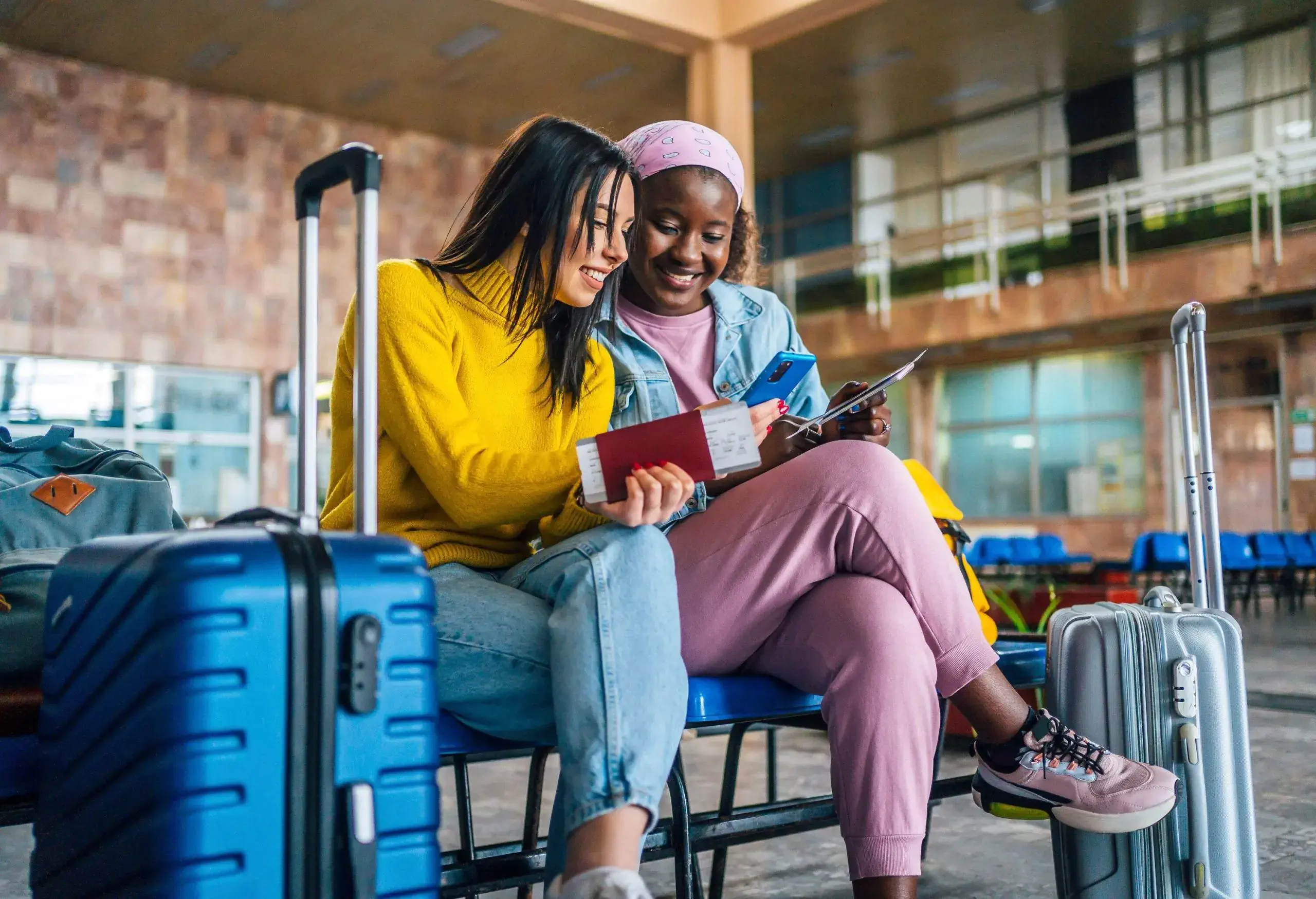
What can you do while waiting at the gate for your flight to board? You can answer last minute emails, read a book, chat with the person seated next to you, or eat the snack or drink you got on the way to the gate.
In some airports, you can even use an app to have food or drink from restaurants throughout the airport delivered to you at the gate.
While you’re waiting at the gate, it’s also a good time to organize your carry-on items so that the things you’ll want to have at your seat, such as your computer or tablet, phone, headphones, water bottle, etc., are in the bag you’ll store under the seat in front of you.
Boarding the plane.
Boarding usually begins about 30 minutes before a domestic flight is scheduled to depart and 45 minutes to an hour before an international flight is scheduled to depart.
Airlines close the boarding process – and the jet bridge door – at least 15 minutes before departure, so be sure to be in the boarding area before that cut-off.
Your airline may board passengers by zones, rows, or seating groups. Your assigned group will be noted on your boarding pass.
First and/or business-class passengers, followed by premium and economy class passengers, with allowances made for parents traveling with small children, anyone who needs assistance getting down the jetway and, often, active military personnel.
When your group is called, get in line or head to the podium by the jet bridge door and scan or show your boarding pass to the gate agent. Then follow the walkway to airplane, find your row, store your bags, and take your seat.
Baggage claim.
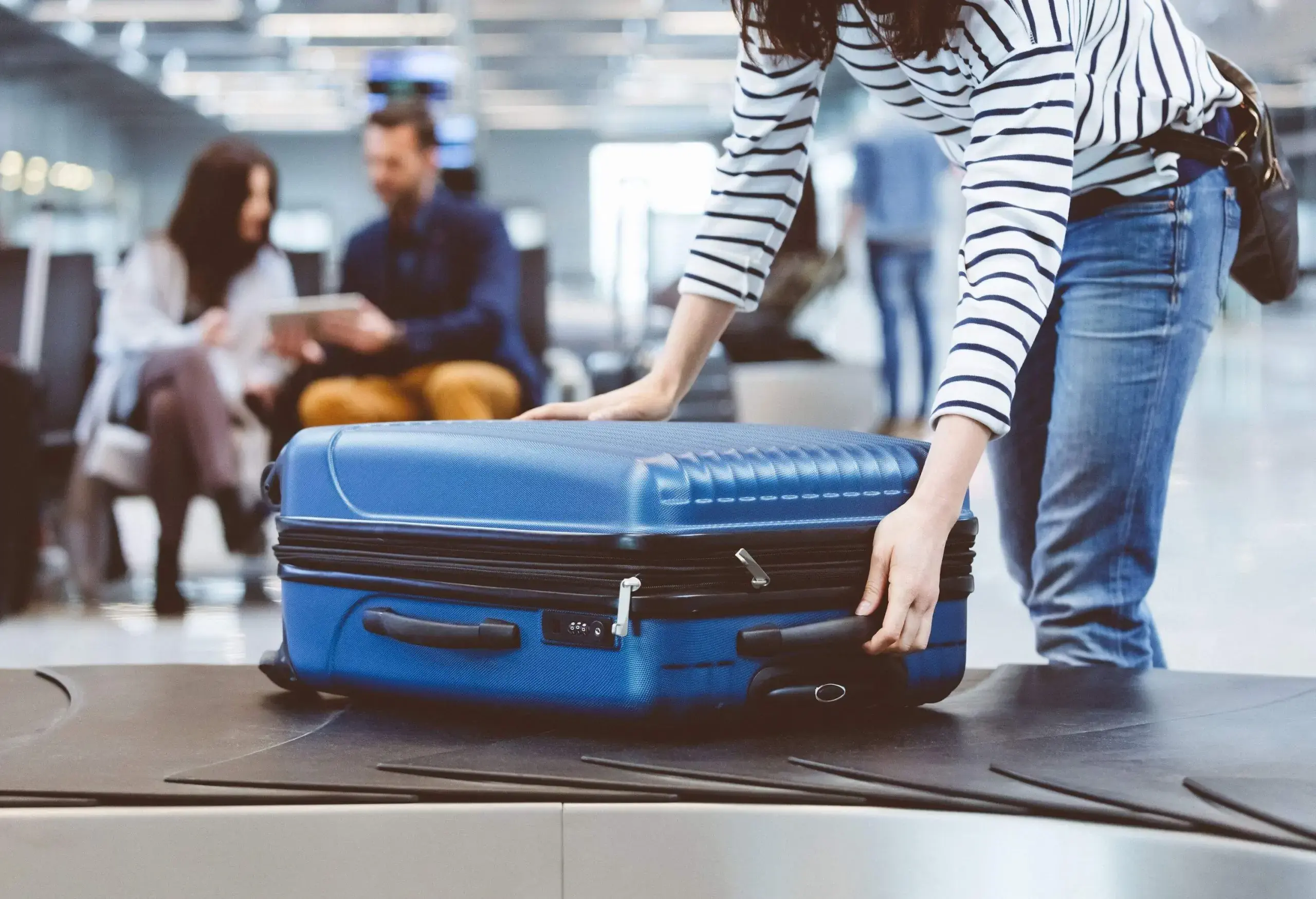
If you’ve checked a bag, head to baggage claim hall after your flight to reclaim your bag off the baggage carousel. Your airline app, a flight attendant, or the gate agent meeting the flight will tell you which carousel will deliver your bags but display boards in the bag claim area will have that information as well.
Unloaded bags can take as little as 20 minutes to make their journey from the airplane to the bag claim area but, especially on international flights, it usually takes longer.
How this guide was created
I’m a veteran travel journalist and one of those odd people who really loves spending time in airports, which I consider modern-day crossroads where so much of the drama, drudge, hope and excitement of the journey is on display. This guide draws on knowledge and skills accrued over many years of documenting airport amenities and making my way through the world, city by city.

